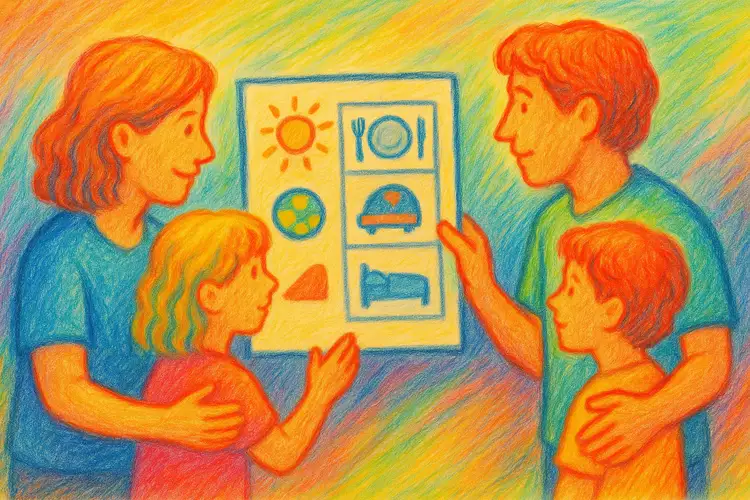Building Better Routines: Visual Support Can Calms Everyday Life
Published {$created} by Carsten Blum
Routines are more than habits — they’re the invisible structure that helps children feel safe, confident, and independent.For children with autism, ADHD, or other developmental differences, that structure can make all the difference between calm and chaos.
Visual support tools like picture symbols and visual schedules turn daily routines into something concrete and easy to follow. They make time visible, expectations clear, and changes manageable.

What This Series Covers
Over the past five guides, we’ve explored how visual routines can help families and educators create calm, structured days.Each guide focuses on a common daily challenge — and how visual tools can make it easier.
Bedtime routines
Learn how visual cues guide children through evening steps and help them wind down peacefully.→ Read the guide to Bedtime Routines
Transitions between activities
Discover how picture symbols reduce stress when switching between tasks at home or school.→ Read the guide to Transitions
Handling unexpected changes
Explore flexible strategies that prepare children for surprises and help them stay calm when plans change.→ Read the guide to Unexpected Changes
Motivation and rewards
See how visual reinforcement encourages independence and positive habits without pressure or conflict.→ Read the guide to Motivation and Rewards
Weekends and unstructured time
Find out how visual plans bring structure to free time — without taking away flexibility or fun.→ Read the guide to Weekends
Key Takeaways
Across all routines, visual support helps children:
Understand what’s happening now — and what comes next.
Build confidence through independence.
Reduce stress caused by uncertainty.
Strengthen communication with parents and teachers.
Feel calm and secure in both predictable and changing environments.
How to Get Started
If you’re new to visual routines, start small:
Choose one routine that often causes stress — like mornings or bedtime.
Create a simple visual schedule with 4–6 steps.
Use clear icons or photos your child understands.
Make the plan visible and review it together daily.
Adjust as needed — flexibility is part of success.
Why Visual Routines Work Long-Term
The real power of visual routines is that they grow with your child.What starts as a simple picture strip can evolve into digital tools, daily planners, or shared routines across home and school.
By turning abstract time into something visible and predictable, you give your child a roadmap — one they can follow toward greater independence and calm.
Summary
Visual schedules and picture symbols are more than just tools — they’re bridges between communication and understanding.They help children navigate daily life with less stress, more confidence, and a greater sense of control.
Next step: Pick one of the guides above and start building a visual routine that works for your family.